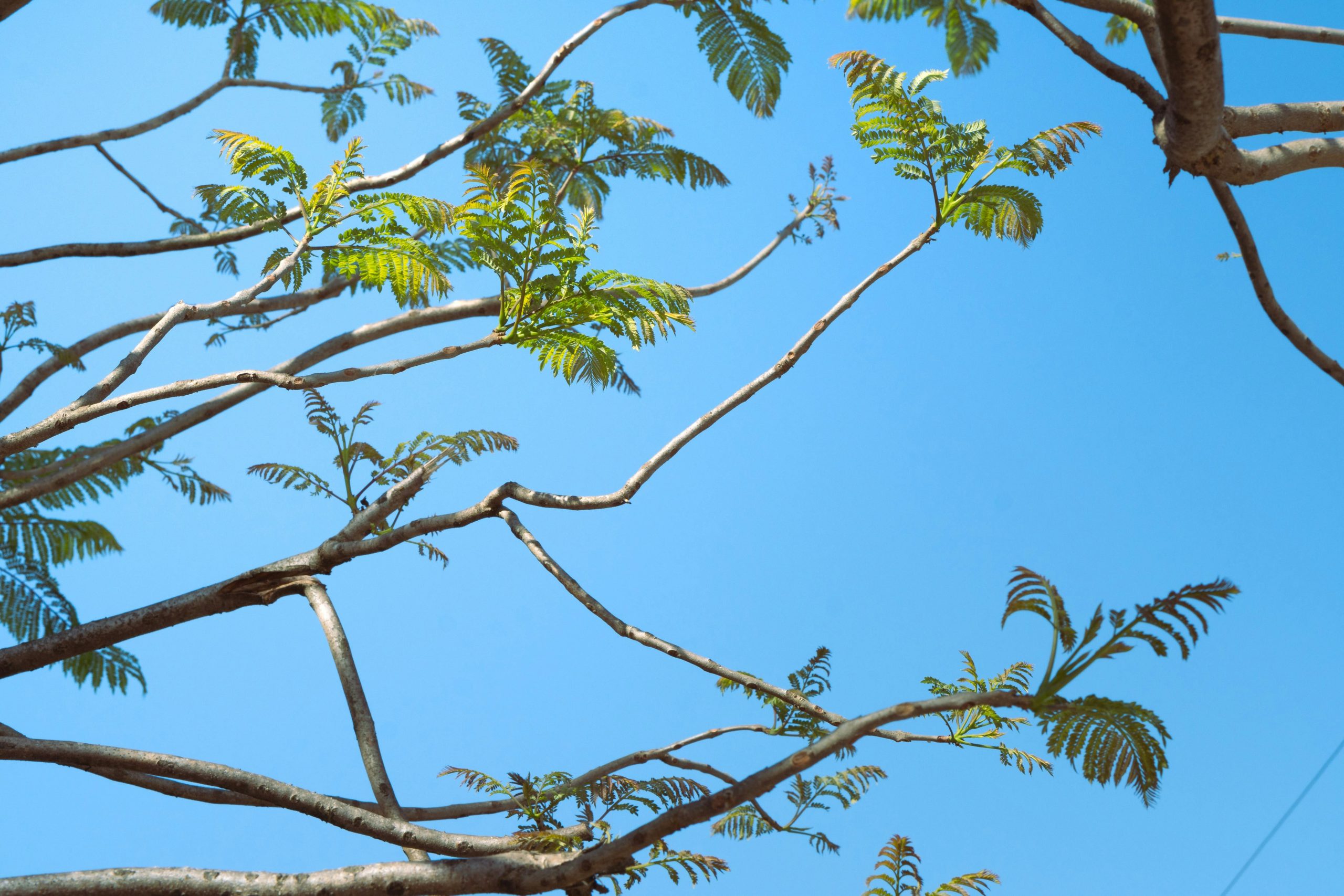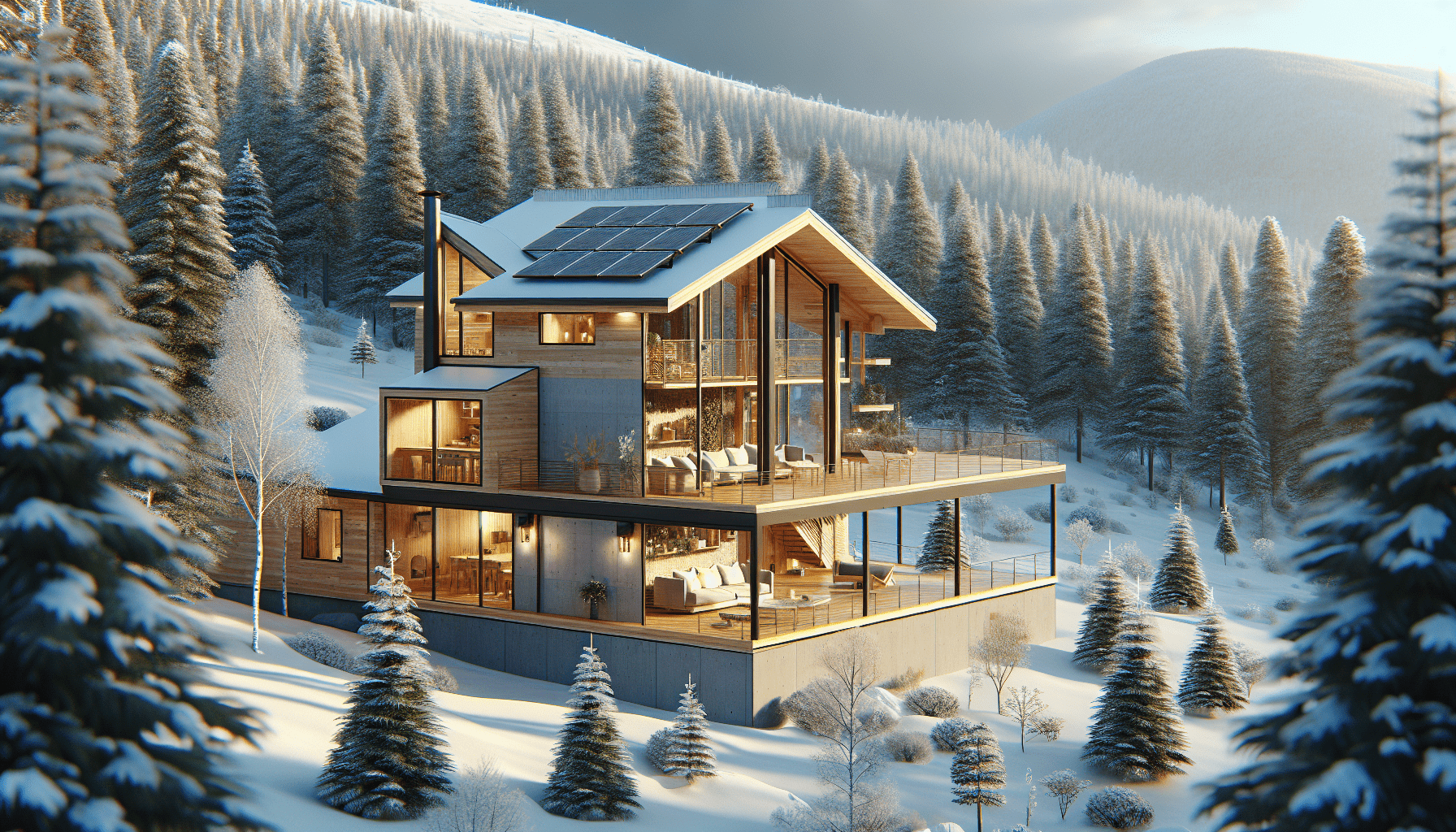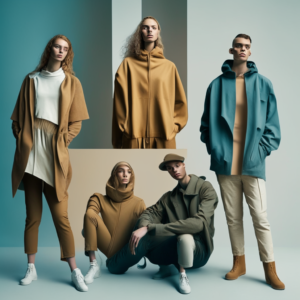In our journey to explore the world of architecture designed to thrive in cold climates, we’ll uncover fascinating examples of how innovative minds have blended sustainability with resilience. From the towering timber structures of Scandinavia to the energy-efficient homes in Canada’s chilliest regions, these remarkable buildings demonstrate that it is possible to create eco-friendly, comfortable spaces even in the most frigid environments. Join us as we delve into the inspiring designs that not only withstand the elements but also prioritize the health of our planet. Have you ever wondered how we can create sustainable buildings that can withstand freezing temperatures? Throughout the world, numerous examples of sustainable architecture in cold climates demonstrate both innovation and practicality. In this article, we’ll explore some fascinating examples that highlight the ingenuity of architects and the benefits these buildings offer to the environment and their inhabitants.

Introduction to Sustainable Architecture in Cold Climates
When we think of sustainable architecture, images of solar panels and lush rooftop gardens often come to mind. However, in regions with harsh winters and frigid temperatures, designing sustainable buildings requires different strategies and solutions. These buildings must efficiently maintain warmth, utilize renewable energy sources, and have minimal impact on the environment. Sustainable architecture in cold climates combines cutting-edge technology with traditional practices, resulting in structures that are both functional and eco-friendly.
Key Principles of Sustainable Architecture in Cold Climates
Before diving into specific examples, it’s essential to understand the fundamental principles that guide sustainable architecture in cold climates:
- Energy Efficiency: Using high-insulation materials to retain heat and reduce energy consumption.
- Renewable Energy: Implementing solar, geothermal, and wind energies to power buildings.
- Passive Solar Design: Maximizing natural sunlight to heat interiors.
- Durable Materials: Choosing materials that can withstand extreme weather.
- Water Conservation: Utilizing rainwater harvesting and greywater recycling.
- Indoor Air Quality: Ensuring ventilation and air filtration to maintain a healthy indoor environment.
- Cultural and Environmental Sensitivity: Incorporating local traditions and ecological considerations into the design.
Each of these principles plays a crucial role in creating buildings that not only survive, but thrive, in cold environments.

Examples of Sustainable Architecture in Cold Climates
The Vernacular Igloo
One of the earliest and still effective examples of sustainable architecture in cold climates is the igloo. Inuit communities have used igloos made from snow blocks for centuries as temporary shelters during hunting expeditions. What makes igloos particularly sustainable is their use of readily available, natural materials and their exceptional thermal properties.
Snow, despite its cold temperature, acts as an excellent insulator. The compact snow blocks trap air, which helps in retaining heat within the igloo, maintaining it at temperatures well above freezing even when external conditions are frigid. This ingenious design minimizes the need for additional heating sources, showcasing sustainable architecture’s potential when traditional knowledge is harnessed.
The Passive House Standard
Originating in Germany, the Passive House (Passivhaus) standard focuses on ultra-low energy buildings that require minimal heating or cooling. This standard has been adapted and successfully implemented in cold climates around the world.
Characteristics of Passive Houses:
- Super-Insulation: Walls, roofs, and floors are thoroughly insulated to prevent heat loss.
- Airtight Construction: Ensures minimal heat loss through drafts and air leaks.
- Triple-Glazed Windows: Windows with multiple panes of glass to enhance insulation.
- Heat Recovery Ventilation (HRV): Ventilation systems that recover heat from outgoing air to warm incoming fresh air.
- Solar Gain: Windows positioned to maximize solar energy input.
In cold climates, Passive Houses reduce the reliance on conventional heating systems, leading to significant energy savings and lower carbon emissions.
The Earthship in Taos, New Mexico
Earthships are a unique form of sustainable architecture designed by Michael Reynolds. These off-grid homes are primarily constructed from recycled and natural materials like earth-packed tires, bottles, and cans. Although Taos, New Mexico, generally experiences moderate temperatures, Earthships can be adapted for colder climates as well.
Key Features of Earthships:
- Thermal Mass: The use of earth as a thermal mass to absorb, store, and release heat.
- Passive Solar Heating: Orienting buildings towards the sun to utilize natural heat.
- Natural Ventilation: Ensuring air circulation through earth tubes and operable windows.
- Water Harvesting: Collecting and utilizing rainwater and greywater for domestic use.
Earthships are designed to be self-sufficient and eco-friendly, representing a sustainable solution adaptable to various environmental conditions, including cold climates.
Canada’s Drake Landing Solar Community
The Drake Landing Solar Community in Alberta, Canada, is a prime example of utilizing solar power in a cold climate. This residential development uses a district heating system supported by solar thermal energy to heat homes.
Highlights of Drake Landing Solar Community:
- Solar Collectors: Panels on garage roofs that capture solar energy.
- Seasonal Thermal Energy Storage (STES): A large underground communal storage system that stores solar heat from summer for use in winter.
- District Heating: A network that distributes heat to 52 homes from the central storage system.
This innovative system significantly reduces the community’s reliance on natural gas for heating, making it a remarkable model for sustainable living in cold regions.
The Bullitt Center in Seattle, Washington
Known as the “greenest commercial building in the world,” the Bullitt Center integrates various sustainable design principles, though Seattle’s climate is more temperate than extremely cold. Its features can be adapted for colder climates to enhance sustainability.
Sustainable Features of the Bullitt Center:
- Net-Zero Energy: The building produces as much energy as it consumes.
- Green Roof: Provides insulation and reduces heat island effect.
- Water Management: Captures and treats rainwater for potable use and manages waste through composting toilets.
- Heavy Timber Construction: Utilizes sustainably sourced wood for reduced carbon footprint.
Despite being in a less harsh climate, the principles employed in the Bullitt Center, like energy efficiency and water management, can be tailored for colder regions to achieve similar sustainability goals.
Snøhetta’s Svart Hotel in Norway
Located in the Arctic Circle, the Svart Hotel aims to be the world’s first energy-positive hotel. Designed by the architecture firm Snøhetta, it sets a new standard for sustainable luxury in extreme cold weather.
Unique Aspects of Svart Hotel:
- Circular Shape: Minimizes environmental impact and maximizes solar energy collection.
- Energy Positive: Produces more energy than it consumes over its lifetime.
- Local Materials: Constructed from sustainable materials found in the vicinity to reduce transportation emissions.
- Geothermal Wells: Utilize geothermal energy for heating and hot water.
Svart Hotel demonstrates that sustainable architecture can blend luxury with eco-friendliness, even in one of the coldest regions on the planet.
Phipps Conservatory’s Center for Sustainable Landscapes in Pittsburgh, Pennsylvania
Though Pittsburgh experiences all four seasons, the Center for Sustainable Landscapes (CSL) at Phipps Conservatory showcases sustainability that can be adapted for colder climates. This building is certified Living Building Challenge, LEED Platinum, AND WELL Platinum, establishing it as a leader in sustainable design.
CSL’s Sustainable Features:
- Renewable Energy: Solar panels and wind turbines providing energy.
- Geothermal Heating/Cooling: Utilizes the earth’s stable temperature for climate control.
- Natural Ventilation: Designed for maximum airflow to reduce heating and cooling requirements.
- Rainwater Harvesting: Systems to capture and recycle water.
This center not only educates visitors about sustainable practices but also provides a practical example of how to integrate various technologies for a holistic approach to environmental stewardship.
The Eastgate Centre in Harare, Zimbabwe
Although Zimbabwe isn’t known for cold climates, the biomimicry principles used in the Eastgate Centre’s design can be applied to colder environments. Inspired by termite mounds, the building uses passive cooling and heating systems.
Biomimicry in Architecture:
- Ventilation System: Naturally regulates temperature by mimicking air flow in termite mounds.
- Thermal Mass: Utilizes concrete to store and release heat, similar to traditional cold-climate buildings.
- Energy Efficiency: Uses 90% less energy for ventilation compared to conventional buildings.
By adapting these biomimicry principles, architects can create buildings in cold climates that are both energy-efficient and environmentally conscious.
Sustainable Building Materials for Cold Climates
To achieve the goals of sustainable architecture in cold climates, selecting appropriate materials is crucial. Some effective materials include:
| Material | Benefits in Cold Climates |
|---|---|
| High-Performance Insulation | Provides superior thermal resistance, reducing heat loss. |
| Triple-Glazed Windows | Minimizes heat loss and maximizes solar gain. |
| Structural Insulated Panels (SIPs) | Easy to install, providing airtight, highly insulated building envelopes. |
| Cross-Laminated Timber (CLT) | Offers strength and insulation with a lower carbon footprint. |
| Recycled Materials | Reduces environmental impact while providing good thermal properties. |
By using these materials, buildings can achieve higher energy efficiency and sustainability.

Challenges and Solutions in Sustainable Architecture for Cold Climates
Despite the advancements, there are unique challenges in designing sustainable architecture for colder regions. Here are some common challenges and their potential solutions:
Challenge: Maintaining Interior Warmth
- Solution: Employing high-performance insulation and airtight construction to reduce heat loss.
Challenge: Renewable Energy Utilization
- Solution: Integrating geothermal or biomass heating systems, which are more reliable in limited daylight winter months.
Challenge: Build Longevity and Durability
- Solution: Using durable materials that can withstand the freeze-thaw cycle to prevent structural damage.
Challenge: Managing Snow and Ice
- Solution: Incorporating designs that facilitate easy snow removal, like sloped roofs and heated pathways.
Challenge: Indoor Air Quality
- Solution: Implementing modern ventilation systems that include air-to-air heat exchangers to maintain fresh air without significant heat loss.
Conclusion
Sustainable architecture in cold climates blends modern technologies with traditional practices to create resilient, eco-friendly buildings. From igloos to Earthships, Passive Houses, and high-tech innovations like the Bullitt Center and Svart Hotel, these examples showcase how creativity and sustainability go hand-in-hand.
As we continue to face climate change’s challenges, it becomes increasingly essential to design buildings that minimize environmental impact while ensuring comfort and durability. By following the principles and learning from these remarkable examples, we can pave the way for a sustainable future, even in the coldest corners of the world.
So, what are some examples of sustainable architecture in cold climates? Reflecting on these diverse and inspiring case studies, we find that sustainable design not only meets the needs of its inhabitants but also harmonizes with nature, proving that sustainability knows no temperature limits.




